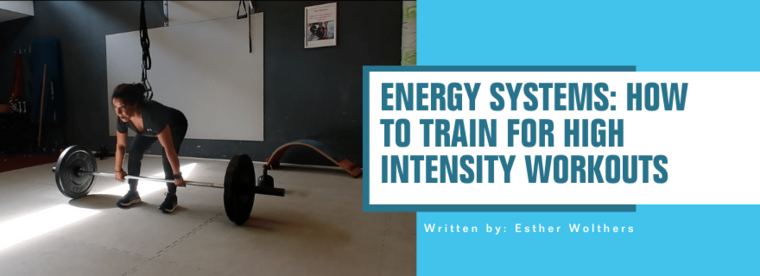Energy Systems: How to Train for High Intensity Workouts

When we exercise, our bodies are like well-oiled machines, producing energy to power our muscles. But did you know that the intensity and duration of your workout determine which energy systems your body uses? Today, we're diving deeper into the fascinating world of energy production during maximal, or high-intensity, exercise.
The Three Energy Systems
Our bodies primarily rely on three energy systems:
1. The Aerobic System: This system uses oxygen to convert nutrients (like carbohydrates and fats) into energy. It's the primary system at work during low-intensity, long-duration activities.
2. The Anaerobic System: This system generates energy without using oxygen. It's split into two sub-systems:
- Alactic Anaerobic System: This system quickly produces energy for short, intense bursts of activity (like sprinting or lifting heavy weights) but it gets depleted very quickly.
- Lactic Anaerobic System: This system kicks in when the alactic system is depleted. It can provide energy for a slightly longer period, but it produces lactate, which can cause muscle fatigue.
Maximal Exercise and Energy Systems
During maximal exercise, these energy systems are pushed to their limits. This type of exercise is intense and short-term, often requiring the body to produce energy at a rate that exceeds what the aerobic system can provide. This is where the anaerobic systems come into play.
Anaerobic Energy Production
The anaerobic energy production, particularly during whole-body exercise, is a complex process and is challenging to measure accurately.
Current research suggests that both the muscle biopsy technique and the oxygen deficit method provide the best insights into anaerobic energy production during intense exercise.
Oxygen Deficit and Efficiency
The concept of "oxygen deficit" is often used to estimate anaerobic energy production. However, during very short, intense exercise where power outputs are well above maximal aerobic power, the oxygen deficit method might underestimate the anaerobic energy release. This is because the efficiency relationship used to predict energy demand may not remain linear.
Power Output and Fatigue
The rate of energy release is critical to success in sports that require the development and short-term maintenance of high power outputs. World-class weightlifters can produce power outputs that are 10 to 20 times that required to elicit the maximal rate of aerobic energy supply. However, such high power outputs are almost instantaneous and cannot be sustained for long periods.
Challenges in Understanding Energy Systems
Despite the advancements in understanding energy systems during exercise, accurately determining anaerobic energy release during intense whole-body exercise continues to pose a problem. Until alternative methods become available or the use of advanced techniques like magnetic resonance spectroscopy becomes possible in whole-body, dynamic exercise, our understanding of energy system response to exercise will remain limited.
How Can This Information Help You?
Understanding the energy systems at work during exercise can greatly enhance your workouts and athletic performance. High-intensity workouts often push our anaerobic energy systems to their limits, so incorporating training methods like high-intensity interval training (HIIT) or sprint training can help develop these systems, enhancing performance during short, intense bursts of activity. Additionally, our aerobic system plays a crucial role in recovery between high-intensity efforts, meaning that improving aerobic fitness could enhance our ability to maintain performance across multiple high-intensity efforts. Finally, it's important to remember that we all respond differently to exercise. When designing your workout regimen, consider your own physiology and response to exercise, and don't be afraid to experiment and adjust your workouts to find what works best for you. So the next time you're pushing through a tough workout, remember the incredible energy systems at work and how understanding them can help you train smarter and perform better. Happy training!
Written by:
Esther Wolthers
Source
This blog post is based on insights from the research paper "Energy System Interaction and Relative Contribution During Maximal Exercise" published in the journal "Sports Medicine". The paper provides a comprehensive analysis of the three energy systems (aerobic, alactic anaerobic, and lactic anaerobic) and their contribution during maximal exercise. It also discusses the methods of measuring energy production and the challenges associated with understanding energy system response to exercise. For a more detailed understanding, you can access the full paper at
